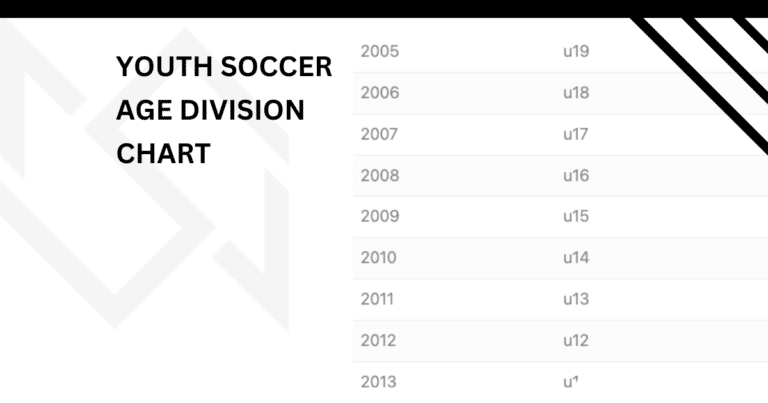Corner Kick: Everything You Need to Know

A corner kick is awarded to the attacking team when the ball goes out of play across the defending team’s goal line. It can be a great way to score off a set play!
Key Takeaways From This Article:
- A corner kick can change the trajectory of a soccer game.
- Knowing how to kick a corner kick effectively is a valuable soccer skill.
- There are multiple strategies for teams to take and defend corner kicks.
How does the ball go out of bounds? The ball going over the goal line typically happens when a shot is deflected by the goalie or a pass is kicked out of bounds by the defense. If you’ve been watching or playing soccer, you probably already know this.
Just how important are corner kicks? In one of my son’s games, I saw a team score four times off corners. The team moved their tall center backs up and headed it off lobbed corner kicks. Unfortunately, there’s no bouncing back from that.
In this article, I’ll address what a corner kick is, some common questions, and how to defend it.
What is a Corner Kick?
A corner kick is a way of restarting play in soccer after the ball has gone out of bounds over the goal line and has last been touched by a member of the defending team. It is a set-piece opportunity for the attacking team to create a goal-scoring opportunity.
Where is a Corner Kick Taken?

A corner kick is taken from the corner of the field on the side where the ball crosses the goal line. So if you are looking at the goal and the ball goes on out of bounds on the left, the corner will be taken from the left arc.
The ball is placed inside the corner arc, and a player from the attacking team kicks it into play.
The defending team must be at least 10 yards away from the ball until it is in play. The player taking the corner kick cannot touch the ball again until another player touches it.
Can You Score From a Corner Kick?
Yes, you can score a goal directly from a corner kick.
According to IFAB Laws of the Game, “a goal may be scored directly from a corner kick, but only against the opposing team; if the ball directly enters the kicker’s goal a corner kick is awarded to the opponents.”
To score directly from a corner kick, you’ll need to curve the ball towards the goal using an in-swinger or out-swinger technique. This requires a lot of skill, strength, and timing of your kick. It’s not easy to do!
How to Take a Corner Kick
Here are the key steps to take a successful corner kick.
Positioning of Players
Before taking a corner kick, it’s important to have your team and the opposing team properly positioned. Your team should have players positioned around the penalty box to attack the ball, while the opposing team should have players positioned to defend against the attack.
Types of Corner Kicks
There are two main types of corner kicks: in-swinging and out-swinging. In-swinging corner kicks curve the ball toward the goal, while out-swinging corner kicks curve away from the goal.
Technique for Taking a Corner Kick
To take a successful corner kick, follow these steps:
- Place the ball in the corner area nearest to where the ball crossed the goal line.
- Take a few steps back and approach the ball at a slight angle.
- Plant your non-kicking foot next to the ball and point your toes towards the target area.
- Use the inside of your foot (near the big toe) to strike the ball at the bottom half to create lift and spin. The more angled your foot, the more likely it will create more spin.
- Follow through with your kicking foot towards the target area.
It’s important to know your teammates. If your teammates are quick and aggressive, a more linear pass may be effective. If your teammates are taller than the defense, a floater may work well.
Either way, try to kick the ball away from the keeper but close enough that your teammates can “dive” in to potentially score.
Who Usually Takes the Corner Kick in Soccer?
When it comes to taking a corner kick in soccer, there are a few factors that can influence who takes the kick. Here are some things to consider:
Position on the Field

Typically, the player who is closest to the corner will take the kick. This is because they have the best angle to aim the ball towards the goal. However, this is not always the case. Sometimes, a team may have a designated player who takes all of their corner kicks, regardless of their position on the field.
On some teams, a left-footed player may take corners on the right side and a right-footed player on the left side. Or, vice-versa if the coach wants an out-swinging corner kick.
Skill Level
Another factor that can influence who takes the corner kick is skill level. If a team has a player who is particularly skilled at taking set pieces, they may be the player to take all the corners.
Tactical Considerations
Finally, tactical considerations can also play a role in who takes the corner kick. For example, if a team is trailing in the game and needs a goal, they may bring in a smaller player to take the kick. The taller players will be available in the box for a potential header.
Overall, there is no one-size-fits-all answer to who usually takes the corner kick in soccer. It depends on a variety of factors, including positions, skill levels, and tactical considerations.
Defending Against a Corner Kick
When defending against a corner kick in soccer, it is important to have a solid strategy in place. Here are some key factors to consider:
Positioning of Defenders
The first thing to consider when defending against a corner kick is the positioning of your defenders. It is important to have players positioned in key areas to prevent the opposing team from scoring. Here are some positions to consider:
- Near Post Defender: This player should be positioned at the near post to prevent the ball from being played short and to block any shots that come in low.
- Far Post Defender: This player should be positioned at the far post to prevent any balls that get past the near post defender from going in.
- Zone Defenders: These players should be positioned in key areas to block any shots that come in high or low.
Types of Defending Strategies in Soccer
There are two main types of defending strategies that can be used against a corner kick:
- Man-to-Man Marking: This strategy involves each defender being assigned a specific player to mark. The advantage of this strategy is that it can prevent the opposing team from making easy passes and can make it more difficult for them to score. However, it can also leave gaps in the defense if the opposing team is able to make quick passes.
- Zone Defense: This strategy involves each defender being assigned a specific area of the field to defend. The advantage of this strategy is that it can prevent the opposing team from making easy passes and can make it more difficult for them to score. However, it can create potential mismatches or unmarked players (I thought you had him/her scenarios).
When defending against a corner kick, it is important to communicate with your teammates and be aware of your surroundings.
By having a solid strategy in place and being prepared for any situation, you can increase your chances of preventing the opposing team from scoring and potentially starting a counter attack.
Successful Corner Kick Strategies

If you want to increase the chances of scoring from a corner kick, you need to have a well-planned strategy.
Corner Kick Set Plays
Set plays are pre-planned moves that your team can use to take advantage of the confusion in the opposing team’s defense. Here are some set plays that you can try:
- The Short Corner: Instead of crossing the ball into the box, pass it short to a teammate who is standing outside the box. This can create space for a shot or a cross into the box. Done effectively, this can create a 2v1 situation.
- The Dummy Run: Have a player run towards the ball as if they are going to take the kick, but then step over the ball and let it roll to a teammate behind them. This can create confusion in the defense and open up space for a shot or a cross.
- The Overlap: Have a player run towards the ball as if they are going to take the kick, but then make a quick run behind the player taking the kick. This can create space for a cross or a shot.
Surprise Tactics
Sometimes, the best way to score from a corner kick is to catch the opposing team off guard. Here are some surprise tactics that you can attempt:
- The Near Post Flick: Instead of crossing the ball into the box, flick it with the inside of your foot towards the near post. This can catch the goalkeeper off guard and result in a goal.
- The Low Cross: Instead of crossing the ball into the air, keep it low and hard along the ground. This can create confusion in the defense and open up space for a shot or a tap-in.
- The Quick Corner: Instead of waiting for your team to get into position, take the corner kick quickly and catch the defense off guard. This can create space for a shot or a cross.
Common Mistakes to Avoid During Corner Kicks
Poor Delivery
One common mistake is to kick the ball too low or too high. If you kick the ball too low, it will be easier for defenders to clear the ball. On the other hand, if you kick the ball too high, it will be difficult for your teammates to reach it. If you had to choose one of them, it would be to loft it high.
Another mistake is to kick the ball with too much force. A hard kick may look impressive, but it can be difficult for your teammates to control the ball. They may even miss the ball entirely. Instead, focus on accuracy and placement.
Wrong Placement
Placing the ball in the wrong spot can also lead to wasted opportunities. If you place the ball too close to the goal, it will be easier for the goalkeeper to catch the ball. If you place the ball too far from the goal, your teammates may have a difficult time reaching it.
Another mistake is to place the ball too close to the corner flag. Instead of kicking it naturally, you may be trying to avoid an object which probably won’t result in an effective corner.
Too Many or Not Enough in the Box
Having too many players in the same area can lead to confusion and make it difficult for your teammates to freely move into space.
Another mistake is to have too few players in the box. If you only have one or two players in the box, it will be easier for defenders to clear the ball.
My Thoughts on Corner Kicks
With an average of 10 corner kicks per game (source), it is important to develop some type of strategy to follow. Even at a younger age, it is beneficial to get players in the habit of filling space and making runs on a corner kick.
Coaches should practice these set plays for at least 20 minutes every week. Simply knowing who should kick it, where players should line up, and how to defend it will be very valuable when they get into games.
In my experience, there are teams that have corners dialed in. Over the season, you’ll see them score at least five goals just from set plays.
With practice and skill, corner kicks can become a powerful weapon in a team’s arsenal, and a thrilling part of the beautiful game of soccer.
Frequently Asked Questions
What is a corner kick in soccer?
A corner kick in soccer is a type of set piece where the ball is kicked from the corner of the field, usually after it has gone out of bounds off of a defending team’s player.
Can you score off a corner kick?
Yes, a team can score off a corner kick even if it doesn’t touch anyone.
What is the difference between a goal kick and a corner kick?
A goal kick or corner kick is both taken when the ball crosses the goal line. A goal kick occurs when the offensive team kicks it out of bounds. A corner kick happens when the defensive team kicks it out of bounds.
How often do corner kicks happen in a soccer game?
On average, a professional soccer game has about 10 corner kicks per game. In youth soccer games, the amount of corner kicks varies significantly depending on age and league.

Written By: Beau Bridges
Beau is the founder of SoccerNovo, dedicated to helping players and parents navigate the youth soccer landscape. As a former youth coach and soccer parent, he shares insights on player development, recruiting, and the ever-evolving soccer scene in the U.S.
Let’s connect




